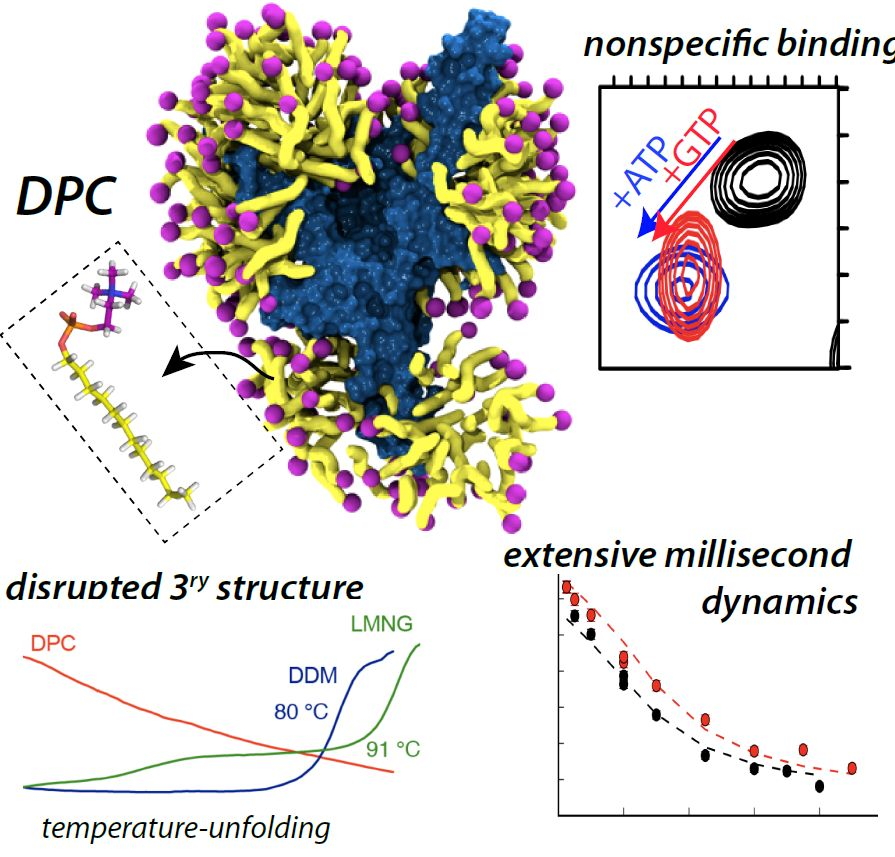Many cellular processes involve membrane proteins (MPs) and characterization of their structure, interactions and dynamics remains a challenge for structural biology. The difficulty is related to the need to extract these proteins from their biological membrane in order to study them. Detergents are frequently used but their physical properties differ from those of lipids and could alter the structural organization of MPs.
In this study, a family of membrane proteins, mitochondrial transporters, were analyzed in detail in a common detergent, dodecylphosphocholine (DPC). Several studies on these mitochondrial carriers in DPC had already proposed details on structure, dynamics and interactions and interpreted these observations from a biological perspective, but their biological relevance has been questionned. The NMR and MEMBRANE group studies, in collaboration with researchers at Nancy and Cambridge, combine NMR, biochemistry and MD simulation methods to resolve unambiguously this controversy. The results show a subtle balance of interactions between protein and detergent, which induces a significant disruption of the protein; the specificity of interaction with substrates is strongly impacted, and the protein samples partially unfolded conformations. A review of a number of structures obtained in DPC illustrates that these effects are relatively general, and helps clarify a debate on the impact of detergents.
